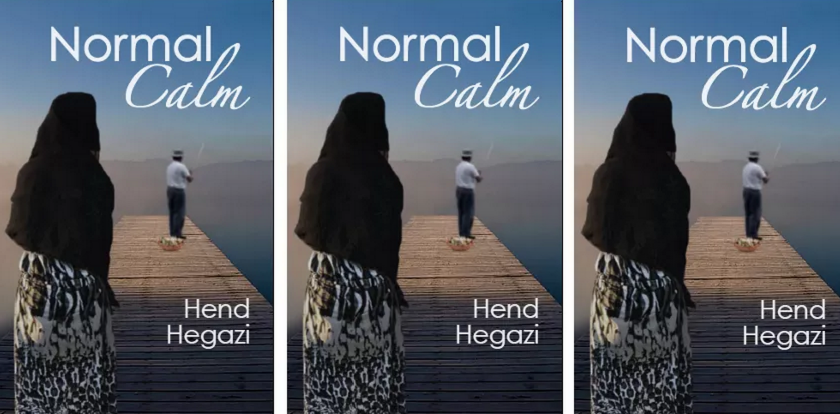Freedom Sailors – The story of the first Voyage of The Free Gaza Movement
Edited by Greta Berlin and Bill Dienst, M.D.
Reviewed by Susan Schwartz
 In the waning days of summer in 2008 two ships from the Free Gaza Movement set sail from Cyprus to Gaza and into history. They broke the decades long siege of Gaza imposed by Israel.To humanitarians throughout the world they were heroes and raised the bar on defining courage.
In the waning days of summer in 2008 two ships from the Free Gaza Movement set sail from Cyprus to Gaza and into history. They broke the decades long siege of Gaza imposed by Israel.To humanitarians throughout the world they were heroes and raised the bar on defining courage.
The Free Gaza and the Liberty made a voyage that had been two years in the planning.
The Free Gaza Movement embarked on this odyssey not to bring freedom to Gaza – that would await another day; not to bring supplies – there was cargo, but only a small amount; they sailed to bring that elusive virtue – hope – to those in a prison. Hope is one of the essentials in the fight for freedom, and to those in prison, hope is multiplied by the outside forces who support them.
Four more successful voyages to Gaza followed. Three voyages after that were turned back by the Israelis. The people of the Free Gaza Movement set a template for the two flotillas that were to follow and, in ways not measurable, were the inspiration for freedom lovers who came after them.
While readers of The Muslim Observer are familiar with their accomplishments, the entire story has only recently been told.
Freedom Sailors tells the story of the origins of the first voyage, the roadblocks and frustrations that almost derailed the project, and the dangers faced by the two brave crews who sailed in rickety boats only marginally seaworthy. This excellent book also tells of what the internationals found in Gaza – a confirmation of their worst fears.
The book consists of essays on various aspects of the voyage written by those most intimately involved. It was edited by activists Greta Berlin and Dr. Bill Dienst.
Herewith their story.
The idea of sailing a boat from Cyprus to Gaza began with a handful of ISM volunteers. These volunteers had either been denied access to Israel or felt that they would be at the next attempt through normal channels.
They were Greta Berlin, the late Riad Hamad, Mary Hughes Thompson, and Paul Larudee.They were joined by two young women from Australia, Sharyn Lock and Renee Bowyer. These six people were the core organizers of the Free Gaza Movement..
What at first seemed to be an unlikely plan gradually became focused. The incredibly enthusiastic Riad Hamad went to search for a boat. Riad was then the head of the Palestine Children’s Welfare Fund and was intensely dedicated to the Palestinian cause. Riad had been the subject of harassment from the FBI, a fact which did not trouble him – he viewed it as the cost of doing business – until he began to feel that it might impact on the careers of his children. He found a boat and matched funds with the nascent Free Gaza Movement to purchase it.. Then Riad died under mysterious circumstance. The FBI entered his house and took all his papers, and the IRS froze his accounts. The movement was back to square one.
Before the days of social networking the tiny nucleus of activists grew as calls went out over the Internet for contributions. They arrived, mostly in small donations. Fundraisers were held and funds solicited in various venues. Enthusiasm spread. Greta Berlin called it Gaza Fever, and it appeared to be contagious.The Israelis, having caught wind of the plan, worked to discourage those who would sell boats to the group and engaged in sabotage on occasions when boats were found.
The departure date had to be continually moved up, and many despaired that it would ever come about. Finally two ships were found in Greece, thanks in large part to the efforts of Paul Larudee. Their location was kept a secret for fear of Israeli interdiction. The movement enthusiastically bought the boats for more than they had planned on spending and naively without taking into consideration collateral expenses. The boats retained their Greek names so as to avoid detection by the Israelis. The crews that worked to make them seaworthy did not know, it is assumed, of their eventual destination. Those that knew kept the secret. It was worthy of a spy novel. The leaders travelled to Greece and stayed in secret locations until the time came to sail the ships to Cyprus, their departure point. The passengers rendezvoused in Cyprus. No one was immune from the stress of the myriad of details; of cost overruns, of delayed departure dates, and the increasing costs of passengers who had to pay for staying in Cyprus until departure. At the last minute a credentialed Captain had to fly in from the United States to replace one whose papers might be questioned by the Israelis should the ship be stopped.
The entire operation was cloaked in secrecy with the participants knowing no more than was absolutely necessary for them to know to carry out their part of the mission. The Free Gaza Movement was working entirely within international law, but all knew that the Israelis considered themselves above international law.
When Greta Berlin arrived at the Cyprus departure point the number of people who wanted to sail had been drastically reduced. The delays and their attendant expenses had made the voyage impossible for some. She had put out a call for all volunteers to come to Cyprus well in advance of the voyage for training.
Shortly before departure a press conference was held to tell the world of the plans of the Free Gaza Movement. If the Israelis stepped between the two ships and the nation of Gaza, they would do so with the entire world watching. Members of the media received threatening telephone calls.
Finally the day of departure came. Passengers were told that they risked death by going. They were told to make our their Wills and to include the preferred disposition of their bodies should they die. No one was surprised, and no one left the boat.
The seas were choppy and sea sickness – often violent – was the order of the day. The nights were cold and clammy, a polar opposite to the heat of Cyprus. Medical personnel were able to treat the more severe cases of sea sickness so that no outside help was needed. Shortly after the two ships departed Cyprus the Israelis jammed expensive technical equipment intended to keep the outside world abreast in real time through the Internet. Eventually – toward the end of the journey – contact with the outside world was re established.
The passengers came from 17 countries and ranged in age from 22 to 84. There were some high profile persons such as Lauren Booth and Yvonne Ridley. Multiple occupations were represented. There were 44 passengers total. All were united in their desire to free the people of Gaza. Isolated, in the dark, often extremely ill – unable to walk the ship without holding on to a stationary object – the passengers kept their eyes on the prize: to let the people of Gaza know that they were not forgotten. The ships carried hearing aids for children and some medicines. The ships’ primary objective was to break the siege. The supplies were limited. More would follow in subsequent voyages.
In Gaza many felt that as the expected arrival was delayed the voyage had been aborted. Soon their disappointment would turn to joy. As dusk approached – on the 23rd of August – the ships appeared on the horizon. Thousands of Gazans cheered; children waded into the waters in greeting; fishermen went to greet the ships; balloons were released. It was a scene of pure joy Those on the sea and on shore witnessed a triumphant moment in history: the Free Gaza Movement through trials and tribulations had succeeded. The movement had won.
During the five days the crews spent in Gaza – ten would elect to stay longer – they visited hospitals, agricultural units, factories, and labor unions, to name but a few places. They sailed with fishermen and witnessed Israeli boats try to intimidate them. Under international law a nation controls the waters that are 12 miles from its shore. The fishermen of Gaza control only six miles. This prevents them from earning a decent living as the best fishing is to be found well beyond six miles from shore. Those internationals who accompanied the fishermen defied the Israeli regulations.
The internationals visited hospitals and saw the devastating affect the Israeli siege had on the people of Gaza. Doctors in Gaza are exquisitely trained and have received their medical training in medical schools throughout the world. But they cannot optimize their efforts if the equipment is not there, and if they have limited use of electricity. Patients on dialysis had to curtail the number of treatments they received so that their treatment fell well below optimum; oncology patients were denied the drugs and equipment essential to their treatment; children suffered from malnutrition which undermined their general health and their ability to withstand disease and fight those medical conditions that affected them. These facts were attested to by Dr. Dienst and by other medical personnel who were among the internationals. The Israelis have also devastated agricultural land.
The internationals visited refugee camps, one of which is the home of Gaza Prime Minister Ismail Haniyeh.. They were impressed by his cordiality and his simple way of life. He had a home in a refugee camp no larger or smaller than others and went about unattended by body guards.
Finally the time came to depart. Seven Gaza residents accompanied the ships on the return voyage. Their was a sadness at the departure, but surpassing the sadness was the overwhelming feeling of accomplishment and the rededication to make Gaza free.
Freedom Sailors is available from www.freedomsailors.com for $15. All the proceeds will go to Palestinian NGOs.
14-46












2012
945 views
views
1
comments